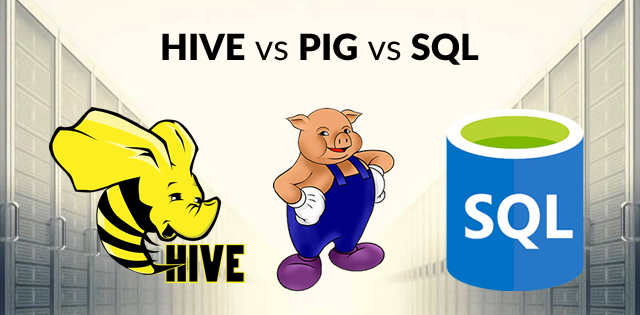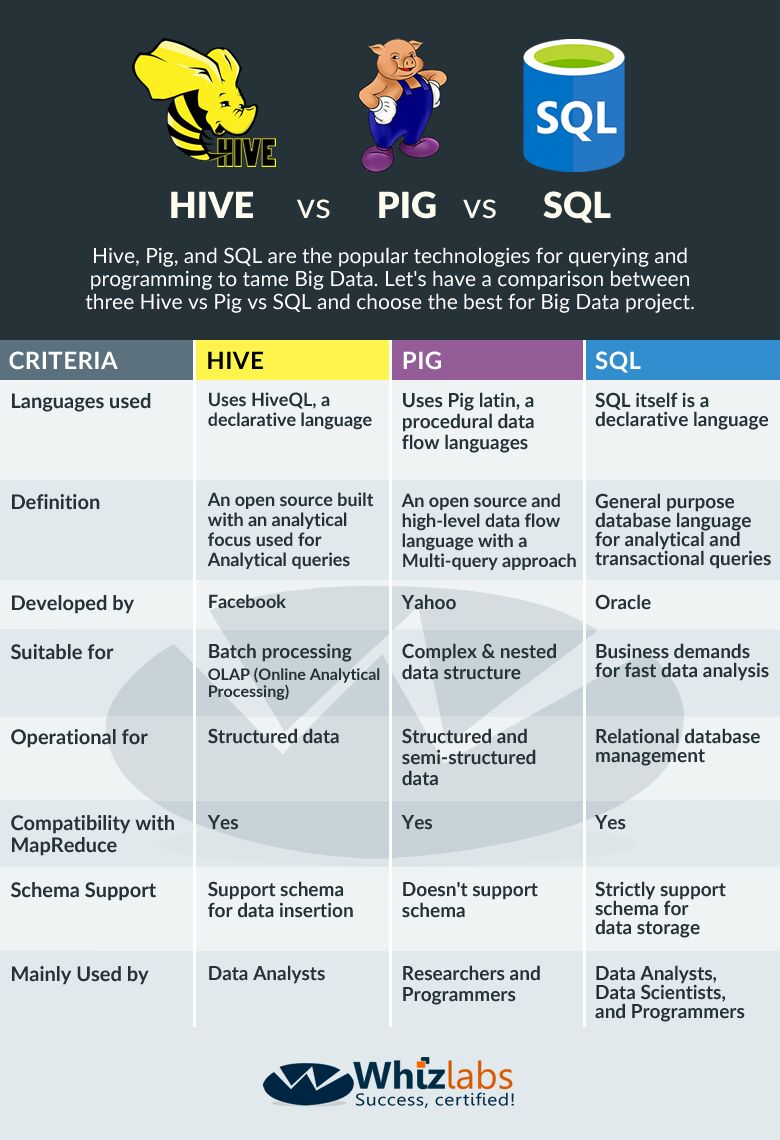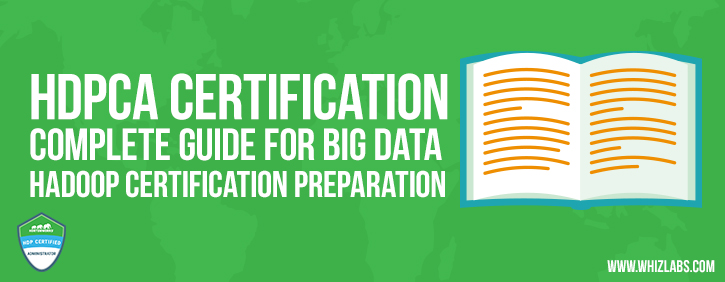With the range of technologies in the big data world, there is often confusion to choose from them. It is required to handle huge databases efficiently with big data, and the options for managing and querying data are also needed. When it comes to managing database, SQL (Structured Query Language) is the old friend, well tried and tested by everyone for data analysis. But the complicated world of Hadoop needs high-level data analysis tools.
New in the world of Big Data Hadoop? Let’s start with the fundamentals, here is everything you should know about Big Data!
Though old SQL still is the favorite of many and is popularly used in numerous organizations, Apache Hive and Pig have become the buzz terms in the big data world today. These tools provide easy alternatives to carry out the complex programming of MapReduce helping data developers and analysts.
The organizations looking for open source querying and programming to tame Big data have adopted Hive and Pig widely. At the same time, it is vital to pick and choose the right platform and tool for managing your data well. Hence it is essential to understand the differences between Hive vs Pig vs SQL and choose the best suitable option for the project.
Technical Differences Between Hive vs Pig vs SQL
Apache Hive
Apache Hive is the excellent big data software that helps in writing, reading, and managing huge datasets present in the distributive storage. It is an open source project built on Hadoop to analyse, summarise, and query datasets. There is a special language similar to SQL known as HiveQL that converts the queries into MapReduce programmes that can be executed on datasets in HDFS (Hadoop Distributed File System).
Hive is seen as a Data Warehouse Infrastructure and is used as an ETL (Extraction-Transformation-Loading) tool. It improves the flexibility in schema design with data serialization and deserialization. It is an excellent tool for querying historical data.
Apache Pig
Apache Pig is another platform with high-level language to express the analysis programmes to analyse huge datasets. It is an open source project that provides a simple language Pig Latin that manipulates and queries the data.
It is quite easy to learn and use Pig if you are aware of SQL. It provides the use of nested data types- Tuples, Maps, Bags, etc. and supports data operations like Joins, Filters, and Ordering. Tech giants like Google, Yahoo, and Microsoft use Pig for the analysis of enormous datasets arising out of search logs, web crawls, and click streams.
SQL
Structured Query Language is the traditional database management tool used by programmers for decades. It is a declarative language that manages the data stored in relational database systems. SQL is a much better option than excel as it is a fast tool for data processing and analysis.
Hive vs Pig vs SQL – When to Use What?
All three technologies Hive, Pig, and SQL are quite popular in the industry for data analysis and management, but the bigger question is to know the appropriate use of these tools. There is a need to understand that which platform suits your needs better and when to use what. Let us understand the scenarios when we can use these three tools appropriately in the context of Hive vs Pig vs SQL.
When to Use Hive
Facebook widely uses Apache Hive for the analytical purposes. Furthermore, they usually promote Hive language due to its extensive feature list and similarities with SQL. Here are some of the scenarios when Apache Hive is ideal to use:
- To query large datasets: Apache Hive is specially used for analytics purposes on huge datasets. It is an easy way to approach and quickly carry out complex querying on datasets and inspect the datasets stored in the Hadoop ecosystem.
- For extensibility: Apache Hive contains a range of user APIs that help in building the custom behavior for the query engine.
- For someone familiar with SQL concepts: If you are familiar with SQL, Hive will be very easy to use as you will see many similarities between the two. Hive uses the clauses like select, where, order by, group by, etc. similar to SQL.
- To work on Structured Data: In case of structured data, Hive is widely adopted everywhere.
- To analyze historical data: Apache Hive is a great tool for analysis and querying of the data which is historical and collected over a period.
Apache Hive is the Big Data technology widely used for Big Data analytics. Let’s understand why is Big data analytics so important?
When to Use Pig
Apache Pig, developed by Yahoo Research in the year 2006 is famous for its extensibility and optimization scope. This language uses a multi-query approach that reduces the time in data scanning. It usually runs on a client side of clusters of Hadoop. It is also quite easy to use when you are familiar with the SQL ecosystem. You can use Apache Pig for the following special scenarios:
- To use as an ETL tool: Apache Pig is an excellent ETL (Extract-Transform-Load) tool for big data. It is a data flow system that uses Pig Latin, a simple language for data queries and manipulation.
- As a programmer with the scripting knowledge: The programmers with the scripting knowledge can learn how to use Apache Pig very easily and efficiently.
- For fast processing: Apache Pig is faster than Hive because it uses a multi-query approach. Apache Pig is famous worldwide for its speed.
- When you don’t want to work with Schema: In case of Apache Pig, there is no need for creating a schema for the data loading related work.
- For SQL like functions: It has many functions related to SQL along with the cogroup function.
Want to know more about Apache Pig? Please refer our blog on Apache Pig Progression with Hadoop’s Changing Versions.
When to Use SQL
SQL is a general purpose database management language used around the globe. It has been updating itself as per the user expectations for decades. It is declarative and hence focuses explicitly on ‘what’ is needed. It is popularly used for the transactional as well as analytical queries. When the requirements are not too demanding, SQL works as an excellent tool. Here are few scenarios –
- For better performance: SQL is famous for its ability to pull data quickly and frequently. It supports OLAP (Online Analytical Processing) applications and performs better for these applications. Hive is slow in case of online transactional needs.
- When the datasets are small: SQL works well with small datasets and performs much better for smaller amounts of data. It also has many ways for the optimisation of data.
- For frequent data manipulation: If your requirement needs frequent modification in records or you need to update a large number of records frequently, SQL can perform these activities well. SQL also provides an entirely interactive experience to the user.
To know more about how SQL fits in Hadoop architecture, you can refer our blog on NoSQL vs SQL – How NoSQL is Better for Big Data Applications?
Does the comparison for Hive vs Pig vs SQL direct the winning of the game?
We have seen that there are significant differences in the three- Hive vs Pig vs SQL. All of these perform specific functions and meet unique requirements of the business. Also, all three requires proper infrastructure and skills for their efficient use while working on data sets.
Hive vs Pig vs SQL |
|||
| Nature of Language | Uses Procedural language called Pig Latin | Uses Declarative language called HiveQL | SQL itself is Declarative language |
| Definition | An open source and high-level data flow language with a Multi-query approach | An open source built with an analytical focus used for Analytical queries | General purpose database language for analytical and transactional queries |
| Suitable for | Suitable for Complex as well as Nested data structure | Ideal for Batch Processing – OLAP (Online Analytical Processing) | Ideal for more straightforward business demands for fast data analysis |
| Operational for | Semi-structured and structured data | Used only for Structured Data | A domain-specific language for a relational database management system |
| Compatibility | Pig works on top of MapReduce | Hive works on top of MapReduce | Not compatible with MapReduce programming |
| Use of Schema | No concept of a schema to store data | Supports Schema for data insertion in tables | Strict use of schemas in case of storing data |
On one side, Apache Pig relies on scripts and it requires special knowledge while Apache Hive is the answer for innate developers working on databases. Furthermore, Apache Hive has better access choices and features than that in Apache Pig. However, Apache Pig works faster than Apache Hive. On the other hand, SQL being an old tool with powerful abilities is still an answer to our many needs. Looking at the differences, we can see that they can meet specific needs of our projects differently.
Both Apache Hive and Apache Pig are used popularly in the management and analysis of big data, but SQL serves as the traditional database management for smaller datasets. Though SQL is old, the advance tools can still not replace it. There is a slight tendency of adopting Apache Hive and Apache Pig over SQL by the big businesses looking for object-oriented programming. However, the smaller projects will still need SQL.
Bottom Line
Despite of the extensively advanced features, Pig and Hive are still growing and developing themselves to meet the challenging requirements. Hence when we are comparing Hive vs Pig vs SQL, there is a distinct direction that Hive and Pig are winning the Big data game, but SQL is still here to stay.
Whizlabs offers you to learn Apache Hive and SQL with complete theory and the following Hadoop certification guide for Hortonworks certifications helps you become a certified Big Data professional –
Spark Developer Certification (HDPCD)
HDP Certified Administrator (HDPCA) Certification
Join us today and make yourself industry ready for the future.
Happy learning!
- Top 45 Fresher Java Interview Questions - March 9, 2023
- 25 Free Practice Questions – GCP Certified Professional Cloud Architect - December 3, 2021
- 30 Free Questions – Google Cloud Certified Digital Leader Certification Exam - November 24, 2021
- 4 Types of Google Cloud Support Options for You - November 23, 2021
- APACHE STORM (2.2.0) – A Complete Guide - November 22, 2021
- Data Mining Vs Big Data – Find out the Best Differences - November 18, 2021
- Understanding MapReduce in Hadoop – Know how to get started - November 15, 2021
- What is Data Visualization? - October 22, 2021



